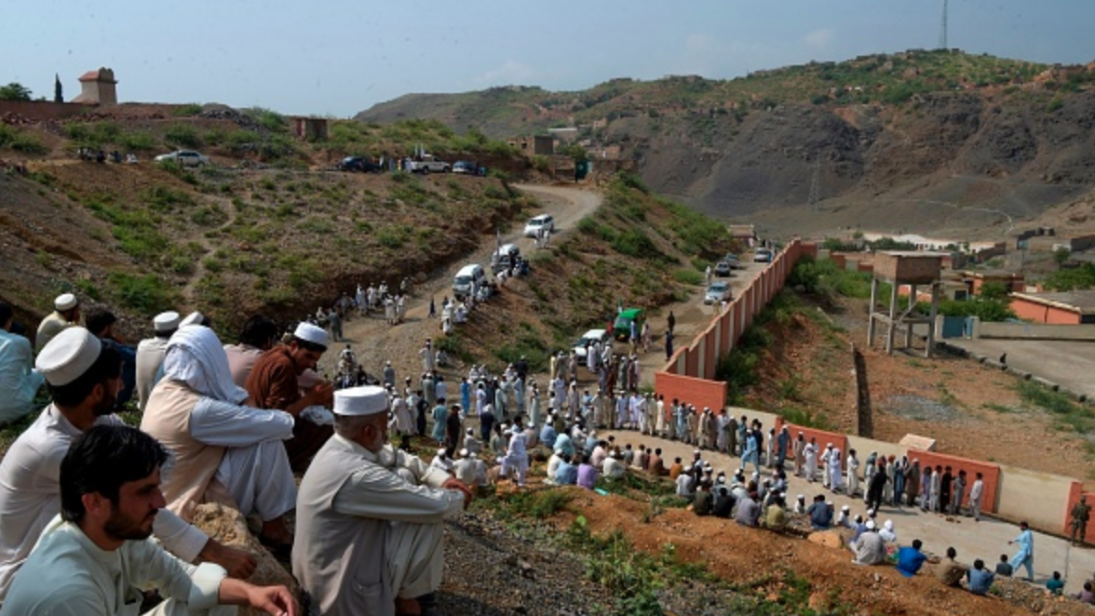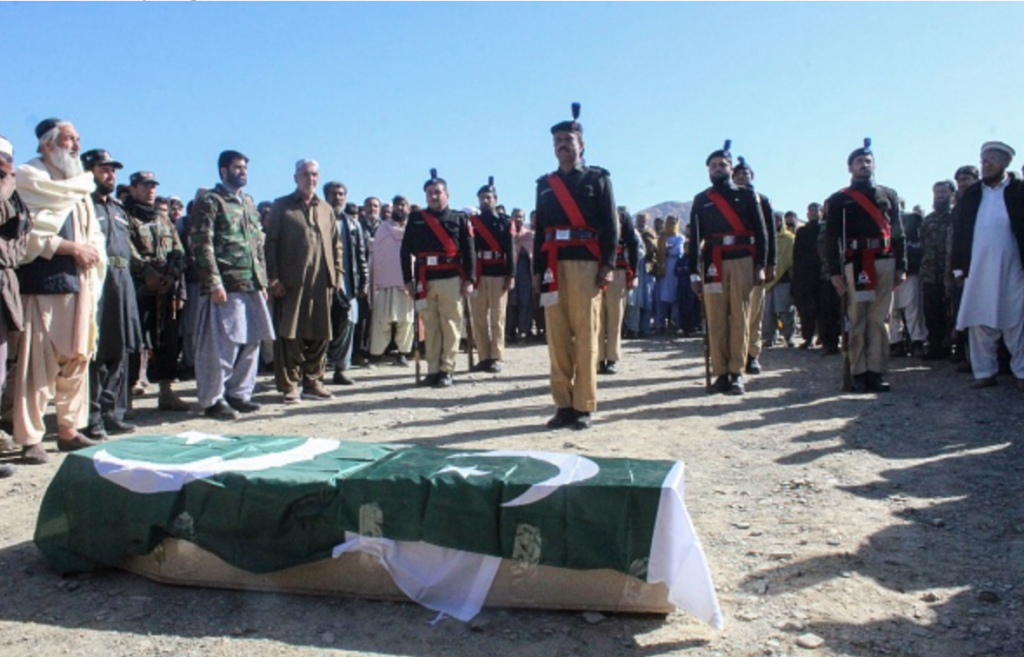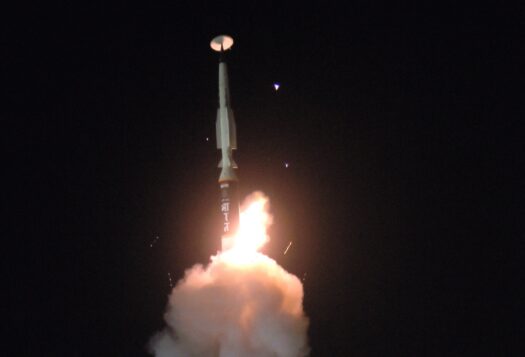
In 2017, the Pakistani security apparatus presumed that the Tehrik-e-Taliban (TTP)’s downfall was inevitable with the capture of their leader, Ehsanullah Ehsan and the Pakistani security forces’ crackdown. However, the TTP has resumed its offensive since 2021, Pakistan Institute for Conflict and Security Studies’ 2021 security report shows an increased number of attacks by the TTP, mostly across the FATA region. Two apparent facilitators of the TTP’s recent resurgence in this area are the group’s trans-national recruitment across former-Federally Administered Tribal Areas (FATA) terrain near the Afghanistan-Pakistan border and the TTP’s popularity with the indigenous population in FATA. Despite the fact that the TTP is an umbrella organization with diverse ethnic militant groups—encompassing Arab, Uzbek, Afghan, Chechen and Punjabi militants—the most powerful factions within the TTP have historically been the Mehsud Group. This is made up mostly of Pashtuns, an ethnic group present mostly in FATA and the Khyber Pakhtunkhwa (KP) region of Pakistan. FATA thus gives the TTP recruitment and operational leverage, influenced primarily by two factors: FATA’s porous border terrain, and the concentration of indigenous and migrant Pashtuns from Afghanistan, whose unique political grievances the TTP exploits. FATA thus remains a challenging region for Pakistan’s counterterrorism strategy: its ethno-geographic proximity to Afghanistan and its previous politically autonomous status have made it susceptible to spillover of ethnic conflict and terrorism from across the border.
The TTP Continues Attacks Despite Border Fence
For the TTP, major operational leverage across FATA lies in its trans-national operational potential and its ability to use Afghanistan as a safe haven. Pakistani government efforts to fence this terrain were aimed at curtailing cross border militancy and illegal human and weapon trafficking but were met with significant resistance from locals and the Afghan government. Despite the fencing, the TTP continues to exploit its cross border, trans-national linkages with ethno-militant groups such as the Haqqani Network (also Pashtun dominated) whose members now occupy top leadership positions in Taliban controlled Afghanistan. In fact, the TTP has recently been reinvigorated by the Taliban-led release of hundreds of its members from formerly Afghan government-managed prisons.
FATA’s ethno-geographic proximity to Afghanistan and its previous politically autonomous status have made it susceptible to spillover of ethnic conflict and terrorism from across the border.
The TTP’s 2021 resurgence reveals the limitations of border fencing as a counterterrorism initiative and how ethno-political affiliations of ethno-militant groups extend beyond physical borders. Border fencing seems to have only further aggravated the threat perception of trans-national terrorist and ethnic militant groups like Al-Qaeda and the TTP, explaining their increased offensive near border areas (both in FATA and Balochistan) since 2021.
Repercussions of Use of Force as A Counterterrorism Strategy
As in the current border fencing policy, Pakistan’s counter terrorism strategy in the past focused on structural and coercive interventions against the TTP. Military operations by Pakistan military in FATA existed as a semi-autonomous area from 2009 to 2011 and again from 2014 to 2019 in the form of Zarb-e-Azb—the final offensive engagement by Pakistan’s military in the region. FATA has also consistently been targeted by U.S. drone strikes to uproot terrorist and insurgent groups, which resulted in human collateral damage. This area experienced massive internally displaced person (IDP) movement in 2007. Though successful in dismantling the TTP, one major repercussion of the use of force was the inculcation of ethno-political grievances in FATA’s local population against the Pakistani government and security forces. The government announced FATA’s merger with KP province to introduce administrative and economic reforms in 2015. These measures altered FATA’s autonomous political identity, further initiatives such as border fencing ended up hindering economic activity and daily commute of locals across the border, disrupting community life.
Though meant to mainstream FATA with the rest of Pakistan these initiatives resulted in embedding grievances amongst locals against the Pakistani state. The emergence of ethno-political movements such as the Pashtun Tahafuz Movement (PTM) from tribal areas of Pakistan is an effect of political mobilization amongst locals in reaction to militarization, destruction of local economy and collateral damages from the war against terror. The TTP in the past has used such local grievances against the government to finance and recruit for insurgencies and suicide attacks against the Pakistani state. Its current resurgence in the region may not be seen independently to its capacity to recruit and mobilize aggrieved locals of FATA for radical violence and terrorism. The Pakistani state has attempted some confidence-building initiatives in FATA, including small grants for rehabilitated IDPs, militant rehabilitation facilities and child health support, yet community cohesion and political trust in the central government remain low.

Pakistan’s Change of Strategy to Soft Counterterrorism Measures
Pakistan launched several de-radicalization programs and camps in Pakistan’s KP region, which presently includes FATA, using religious and culture based peace teachings to help militants change their worldview. The state has attempting deconstructing radical narratives with Initiatives like “Paigham-e-Pakistan,” a consensus among religious scholars denouncing suicide bombing and use of terrorism in the name Islam. The 21st constitutional amendment in 2015 delegitimized use of force by actors other than security sector of Pakistan. The Pakistan Tehreek-i-Insaaf (PTI) government in 2021 indicated interest in possible reconciliatory negotiations with the TTP that could lead to systematic disarmament and reintegration of militants. This, however, received extensive backlash from civil and political spheres of society.
The TTP violated its ceasefire with government in December 2021, exhibiting a lack of interest in disarmament or disengagement. With the Pakistani population still lamenting the loss of 60,000 people from terrorist attacks, the reintegration of former militants into society without a deeper policy for targeting their ideology and recruitment potential seems a dangerous policy option for the government. The TTP keeps setting unrealistic negotiating terms, like demanding release of its prisoners held by the state. The TTP and other radical groups are exploiting what is effectively a state of limbo between them and the government to continue attacks near Af-Pak border areas and FATA in particular.
A New Direction? The National Security Policy and a Way Forward
Pakistan may have signaled a resolve to adapt its hard-power inclined approach to internal security, which could affect its policies towards terror groups in former-FATA. The country’s new National Security Policy (NSP)—valid until 2026—holistically encapsulates all national security priorities of the country. The previous “National Action Plan” (NAP) of 2014 focused on coercive actions and institutional coherence for countering violent extremism and terrorism. The NSP discusses the KP region (FATA included) as part of government efforts to reduce inequalities in the country. The government also aims to introduce public engagement, economic reform and a soft diplomatic approach on the Afghanistan front. This may help the state to move beyond conflict management and focus on reconciliation and rehabilitation of war-torn areas near the border, including FATA.
The government and international community’s focus should be on helping restore the local economy, infrastructure, and community life.
Recruitment of youth and participation of tribal leaders of FATA in the Afghan conflict was a key operational incentive for transnational militant groups such as the TTP to keep this terrain engaged in violent conflict cycles. To curb this in the future, the government and international community’s focus should be on helping restore the local economy, infrastructure, and community life. A further measure could be to dissociate Pashtun identity from terrorism and radicalization through a positive depiction of their cultural values in media and respecting their reservations through political engagement. This may help reduce polarities and lower the potential of radical segments to recruit locals on ethno-political grievances basis. At the dyadic level, the Pakistani and Afghan governments should agree on counterterrorism measures against transnational militant groups and collaborate on efforts like border fencing to comb the terrain from radical militancy and terrorism. Adopting this holistic approach to counterterrorism efforts in the region could help extract FATA from cyclical violence.
***
Click here to read this article in Urdu.
Image 1: Abdul Majeed/AFP via Getty Images
Image 2: Abdul Basit/AFP via Getty Images


